The Legend Of Belarusian Resistance
6- 14.01.2019, 13:15
- 44,918
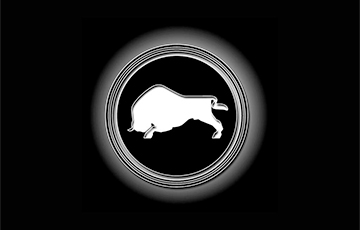
The story of the most massive and strong youth organization in the contemporary history of Belarus.
On January 14, 2001, in the very beginning of the new millennium, forty young people gathered in the Bielavezha Forest to create a new movement. The movement of the people who didn't want to tolerate the insane deeds of the depraved dictator and his gang any longer. The movement of the people who wanted to live in the independent, strong and free Belarus. This is how ''Zubr'' was formed - the brightest, biggest and strongest youth organization in the contemporary history of Belarus, writes ''Basta!'' Telegram channel.
''We deny violence. Our way is non-violent resistance to the regime. We do not see citizens of Belarus as ''us'' vs ''them''. We are equal to each other, and everyone of us can influence the decision-making process. We know that victory can be achieved only through personal courage,'' the first leaflets distributed by the ''Zubr'' guys said. Non-violence, solidarity, and personal courage became the key principles of the new movement. ''Zubr'' consisted of autonomous groups. The movement had no precise hierarchy or formal leader. Over one night, the walls of dozens of Belarusian towns and cities were covered with ''Zubr'' graffiti signs. Thousands of vividly coloured stickers appeared in the streets. The society was offered a riddle to which no one seemed to have a clear answer. Everyone disputed and talked about it. The newspapers published various options and rumors.
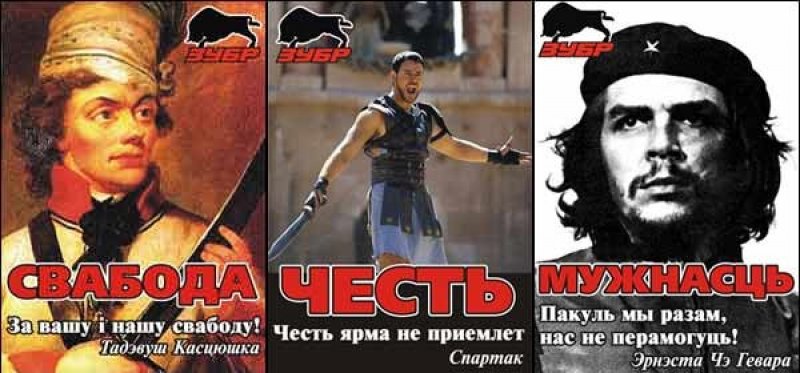
A month after the meeting in the Bielavezha Forest, ''Zubr'' announced a press-conference, to which representatives of all Belarusian and foreign media, accredited in Minsk, came. A sportive-looking guy came over to the monument to Belarusian patriot Marat Kazey, read aloud the Memorandum of the Zubr, handed the document over to the press, and left without asking any questions. All newspapers wrote about the unusual press-conference. Everyone expected renown politicians, of whom the public was pretty tired already, to come and announce the creation of yet another coalition. The newspapers already prepared the routine headings, aimed at mocking the new initiative. However, they had to re-write everything, the intrigue continued, and no one could really give an answer to the question: ''What is Zubr?''
On March 6, 2001, the country learned that street actions might look very different. Here is the report by Radio Racyja: ''The action of the ''Zubr'' movement in the center of Minsk lasted for only half an hour. Young people lined up along Skaryna Avenue with portraits of politicians who disappeared during the years of Lukashenka’s rule. "Zubr" shocked all those present with their action. Nobody expected that in an instant about a hundred people would rise along the main highway from the Kastrychnitskaya Square to the Independence Square.
The action lasted for no more than half an hour, and ended as unexpectedly as it began. Not only journalists, but also police officers did not guess about the nature and venue of the action. This action clearly contrasts with other opposition events. It can be assumed that non-traditional ways of fighting for democracy will attract many people to the “Zubr”. One can only guess what surprise the members of this movement will prepare next time.
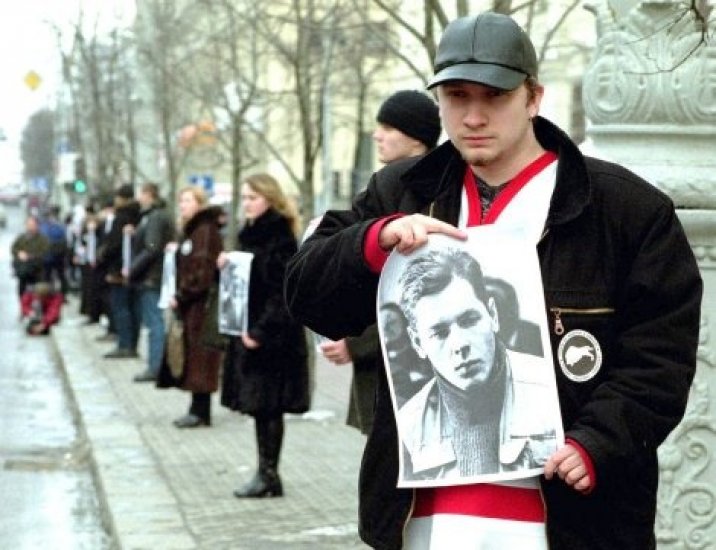
''Where are the disappeared opponents of Lukashenka?''- this was the first question that ''Zubr'' asked the regime. Shortly after the March 6 action, thousands of graffiti appeared across the country. Many of them were made publicly. On a spring afternoon, huge graffiti ''Where is Hanchar?'', ''Where is Zavadski?'', ''Where is Zakharanka?'', ''Where is Krasouski?'' were made in the presence of the journalists along Masherov Avenue, where the dictator traveled daily. The authorities sought to paint over the graffiti, but the housing and communal services soon ran out of money for paint. The ''Zubr'' guys had paint though.
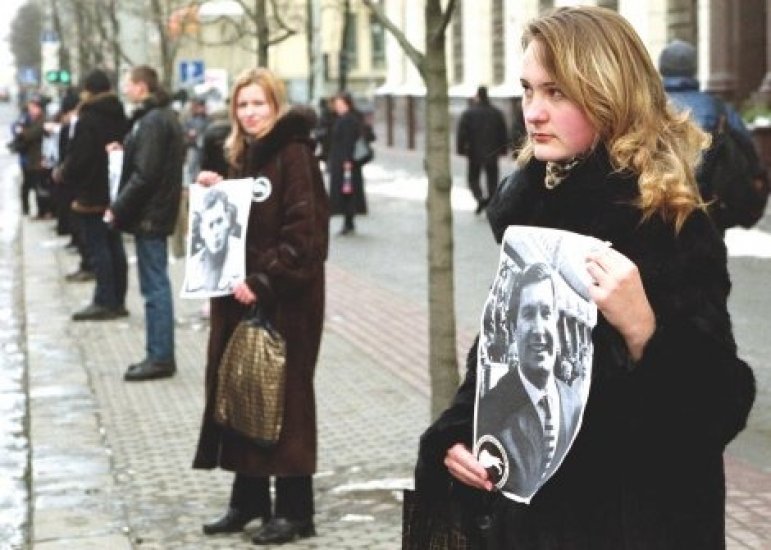

''Final Diagnosis'' became on of the brightest actions of 2001. The ''Popular Psychological Feast'' took place on April 21 in the Minsk Horky park. The main theme of the event was the diagnosis ''Moderately manifesting mosaic psychopathy with the prevailence of features of paranoid and antisocial personality disorder'', previously made with regard to Aliaksandr Lukashenka by doctor-psychiatrician Dzmitry Shchyhelski.
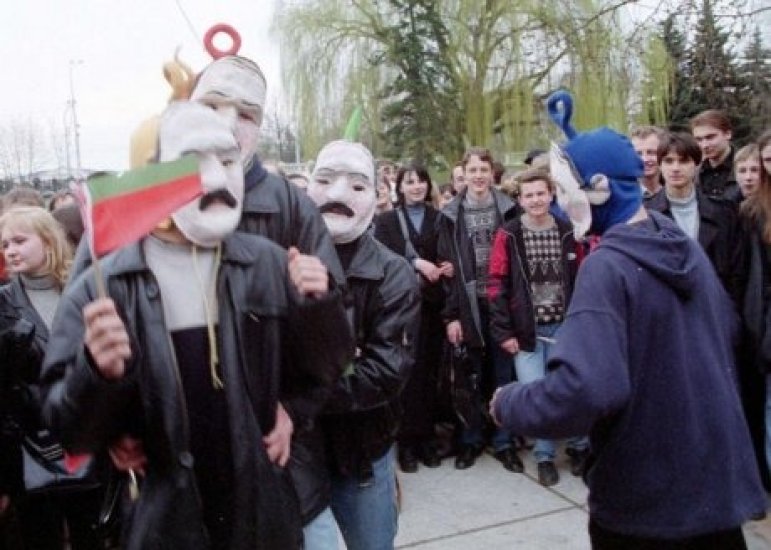
''If you confuse Schopenhauer with Kaltenbrunner, if you prefer to sleep not in your pajamas, but in a bulletproof vest, if you see spies everywhere, if your only friends are your skis, if you feel that you are crazy, but still occupy a chair of a big boss- Dr. Zubr will cure you! ", - said the invitation booklet.
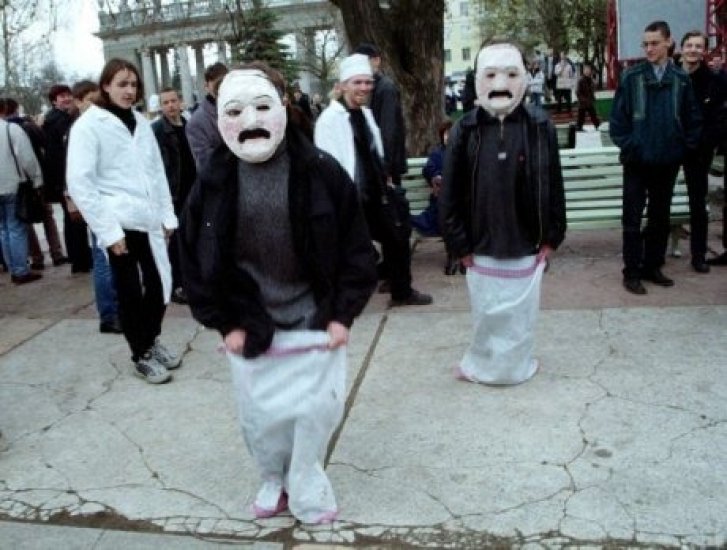
The action became the hit of the year. Never before were political events in Belarus held in the performance format. The police came across such phenomenon for the first time as well, so they seemed totally bewildered, not knowing how to react to what was going on. At the time indicated in the leaflets and stickers, attractions and improvised theatrical shows began in different parts of the park. Some ''Zubr'' activists skied on the asphalt, wearing masks with moustaches, some, wearing doctors' outfits, caught passers-by and made final diagnosis to them. It was also possible to put on a moustached mask and take part in the ''Scream-4'' competition: to scream in the megaphone the scariest possible way and let the crowd define the winner.
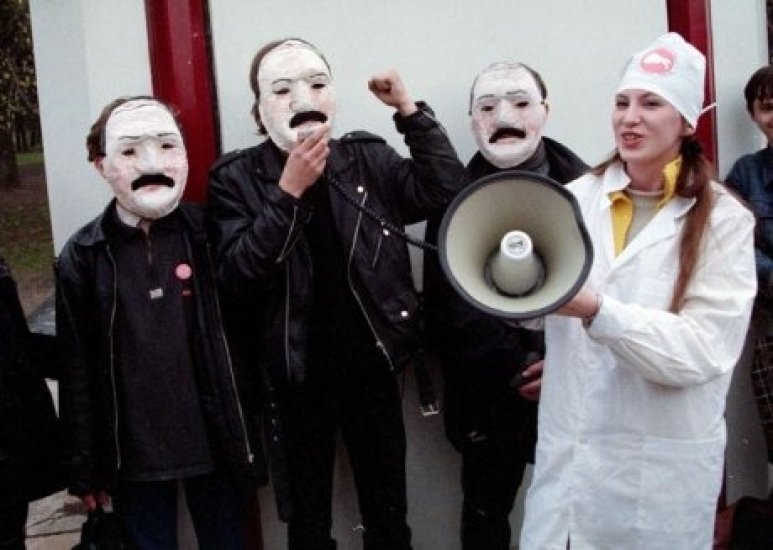
Also, everyone who wanted to try on the mask was offered an opportunity to play table hockey or to take a children's hockey stick and play the dictator's favourite game with the hospital attendants. At one moment, two moustached skiers picked up the speed on the asphalt and jumped into the cold April water of the Svislach river, making the ski swim run. The police were catching "crazy dictators" already on the opposite bank.

Mass detentions began only after several ''Zubr'' activists unfolded a banner with the inscription ''Let's say no to the fool!'', and another one read a short fiery speech into a megaphone. This action became a catalyst. Across the country, young people took out old skis, others found white scrubs. Hundreds of young people joined in capturing the crazy mustached skier. The main goal of the action was achieved - people stopped being afraid. Any dictatorship creates the so-called ''omission spiral'' - when the majority of people opposing the dictator simply do not believe in own strength and, thus, do not know that they are the majority. Even the policemen laughed, watching the moustached guys "sliding" on the asphalt.
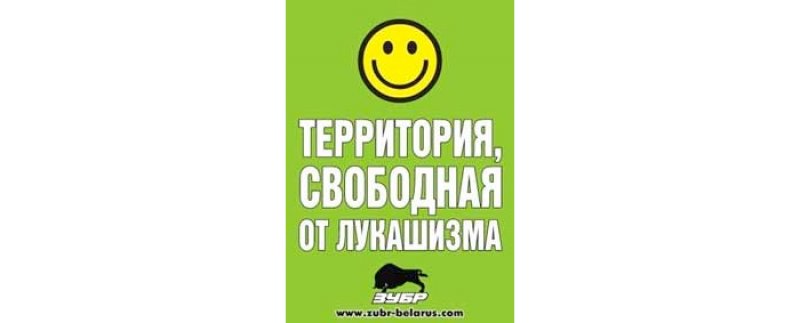
The regime did not know for a long time how to deal with a new unusual form of youth protest, destroying the fear of possible reprisals. In the five months of its existence, the Zubr’s rating according to the data of the United States Republican International Institute was higher than that of any non-governmental youth organization, political party, or civil initiative of the country. 60% of Belarusians learnt about the movement. Among young people, this rating was much higher. The ''Zubr'' volunteer network at that time operated in 152 of the country's population areas and distributed up to 2 million units of printed production per week.









